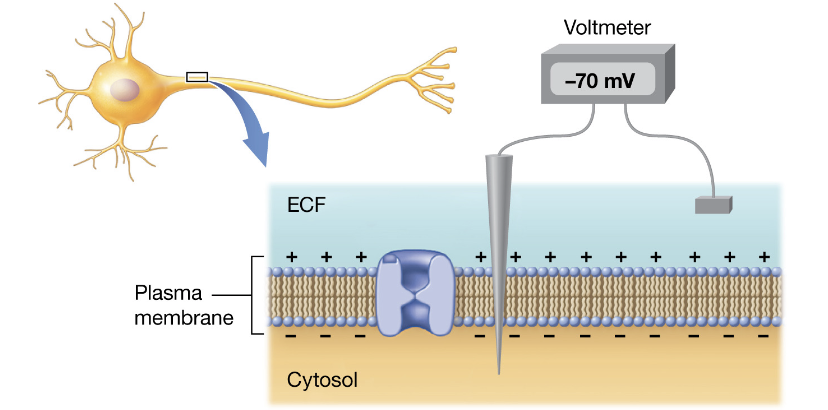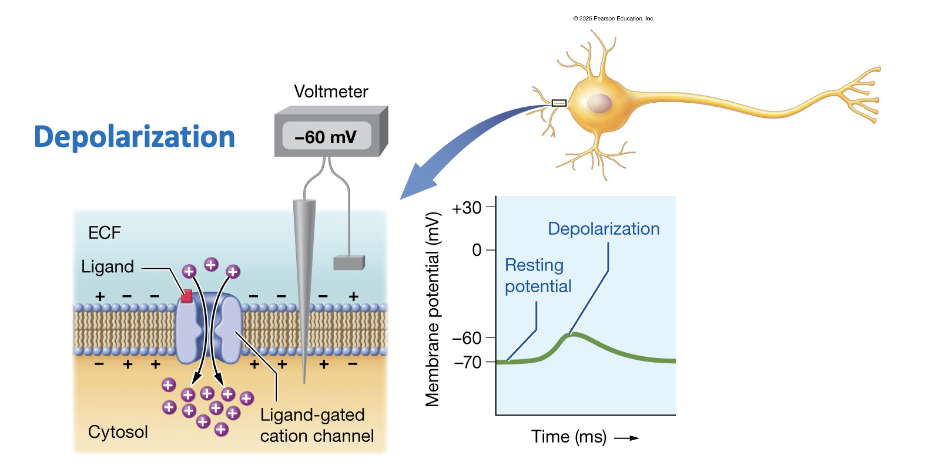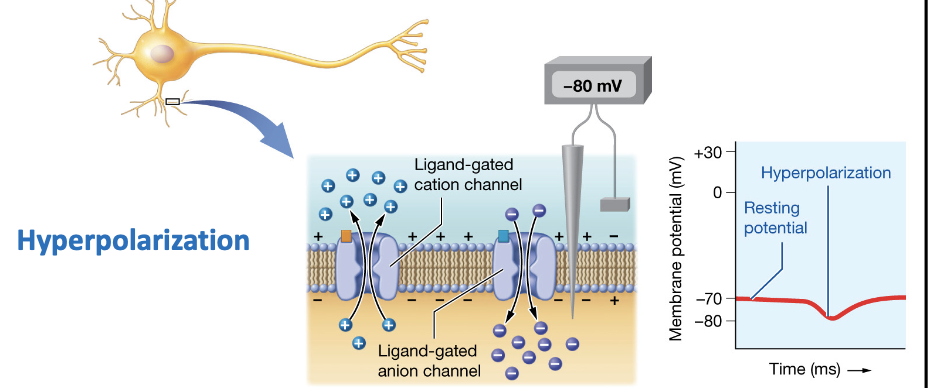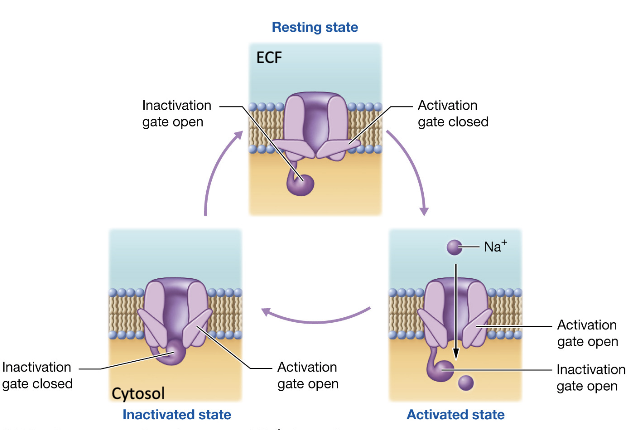CH 10-11
1/23
Earn XP
Description and Tags
Muscle Physiology and Neurons
Name | Mastery | Learn | Test | Matching | Spaced |
|---|
No study sessions yet.
24 Terms
Main components of the nervous system
• The brain: the nervous tissue contained within the cranium
• The spinal cord: the extension of nervous tissue within the vertebral column
• Neurons and neuroglia: cellular components of the nervous system
The two structural divisions of the nervous system are:
-central nervous system (brain and spinal cord)
-peripheral nervous system (cranial nerves, spinal nerves and their branches.)
What is the division of the nervous system for body control?
-sensory (Afferent) division: Divided into somatic and visceral sensory division.
-Peripheral nervous system (PNS): Cranial and spinal nerves link CNS and rest of body. Also perform motor and sensory functions.
-Central Nervous system (CNS): Brain and spinal cord integrate information.
-Motor (Efferent) division: Divided into somatic motor division and autonomic nervous system (ANS).
What makes up the Afferent division & their functions
somatic sensory division:
-includes skeletal muscle & skin
-function: Carries general sensory stimuli from muscles , bones, joints, and the skin, as well as special sensory stimuli.
Visceral sensory division:
-includes urinary bladder & stomach
-function: carries stimuli from organs
What makes up the Efferent division & their functions
Somatic motor division:
-Includes skeletal muscle
-function: carries stimuli to skeletal muscles
Autonomic nervous system (ANS):
-includes: cardiac muscle & smooth muscle
-function: carries stimuli to smooth muscle, cardiac muscle, and glands.
What is the general function of the nervous system?
Receive information about the environment around us, generating responses to that information, and integrate sensory input with memories, emotional state, or learning.
What are the three main functions of the nervous system?
Sensory function (detect stimuli)
Response function (produce voluntary/involuntary responses)
Integration (translate sensory info into perceptions)
Describe Sensory function
-detect stimuli that registers a change from homeostasis or a particular event in the environment
Describe Response function
produce a response (voluntary or involuntary) based on the stimuli perceived by sensory structures
Describe Integration function
CNS translate sensations from neural impulses into perceptions (cognition)
What is a neuron
basic unit of the nervous system
Describe resting potential
-Resting membrane potential (-70mV for neurons).
-the membrane at its negative resting membrane potential, before stimulation.

Describe depolarization
-60 mV
gain of positive charges makes the inside of the cell less negative, causing depolarization.

Describe Hyperpolarization
-80 mV
Loss of positive charges (or gain of negative charges) makes the inside of the cell more negative, causing hyper polarization.

What are all the ion channels important to neurons
Leak channel: stimulus: stimulus- none, always open
also, Na+/K+ pump works with the leak channels to maintain the resting potential.
Ligand-gated channel: stimulus- binding of a ligand to a receptor associated with the channel.
voltage-gated channel: stimulus- voltage changes across the plasma membrane.
mechanically gated channel: stimulus- mechanical deformations of the channel (by pressure, stretch, etc.)
What kind of potential is specific to dendrites and cell bodies
Dendrites and cell bodies
generate local potentials that spread to the axon hilock
what is action potential
rapid depolarization and repolarization of the membrane potential of a cell.
Only axons generate action
potentials
Action potentials are initiated in the trigger zone of the axon hilock
where are voltage gated channels located in neurons
Voltage gated channels are in the axons and axon terminals of neurons
Describe Voltage gated K+ channels
has two states:
resting – activation gate is closed;
channel is closed
and activated – activation gate is
open; channel is open
there is NO inactive sites for K+

describe voltage gated Na+ channels
has three states:
resting – channel is closed,
although the activation gate is closed while inactivation gate is open.
inactivated – inactivation gate is
closed; activation gate is open
and activated – both the inactivation
and activation gates are open, and the channel is open.

Describe the sequence of events during an action potential.
Threshold reached at -55 mV by local potential depolarizing axolemma.
activation gate for Na⁺ channels open in axon hillock (depolarization)
Inactivation gate for voltage-gated Na+ channels close, K⁺ channels stay open (repolarization). voltage-gated Na+ channels at resting stage.
voltage-gated K+ channels may release additional K+ ions before returning to at resting stage (hyperpolarization). Resting polarization is restored in this segment of the axolemma.
What is the absolute refractory period?
No additional stimuli can produce an additional action potential
-Only one action potential can occur at a time on a given region of a neuron.
What is the relative refractory period?
Only a strong stimulus can produce an action potential
What is a nerve impulse?
A series of propagating action potentials along a neuron.